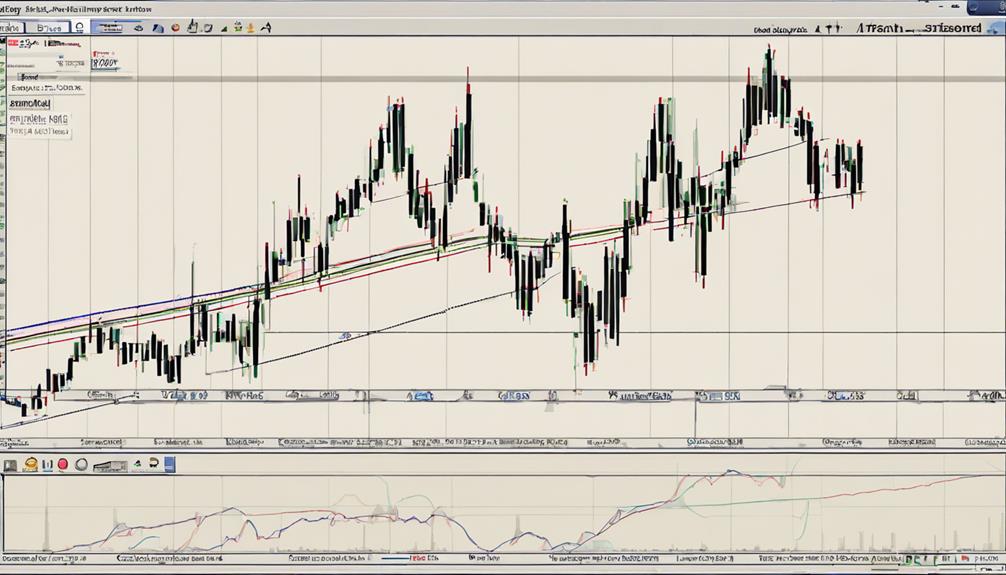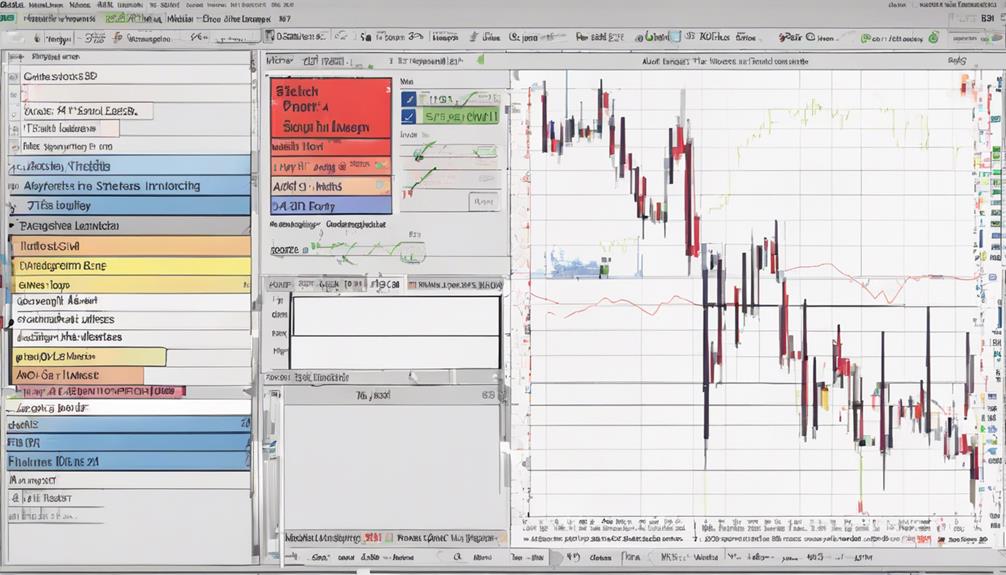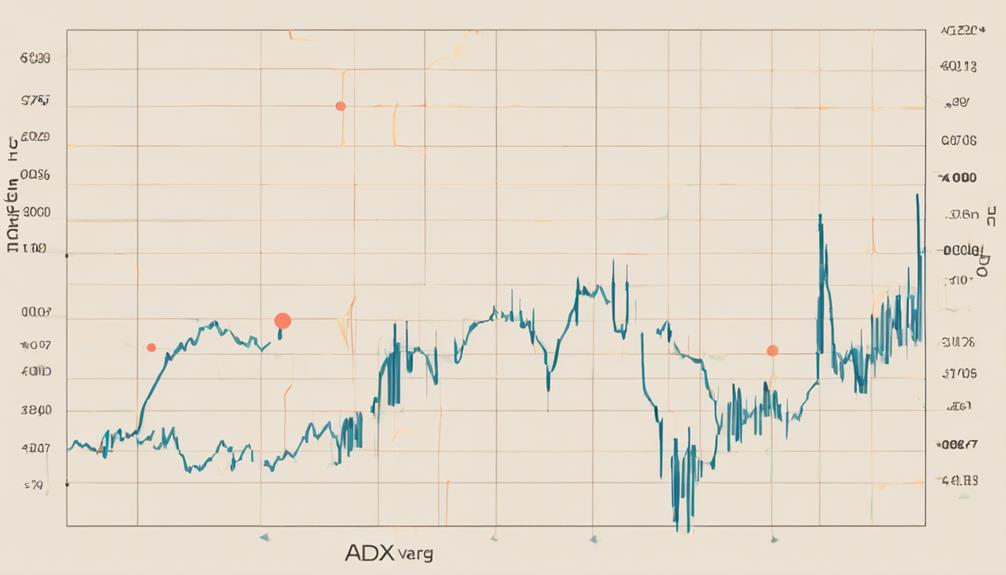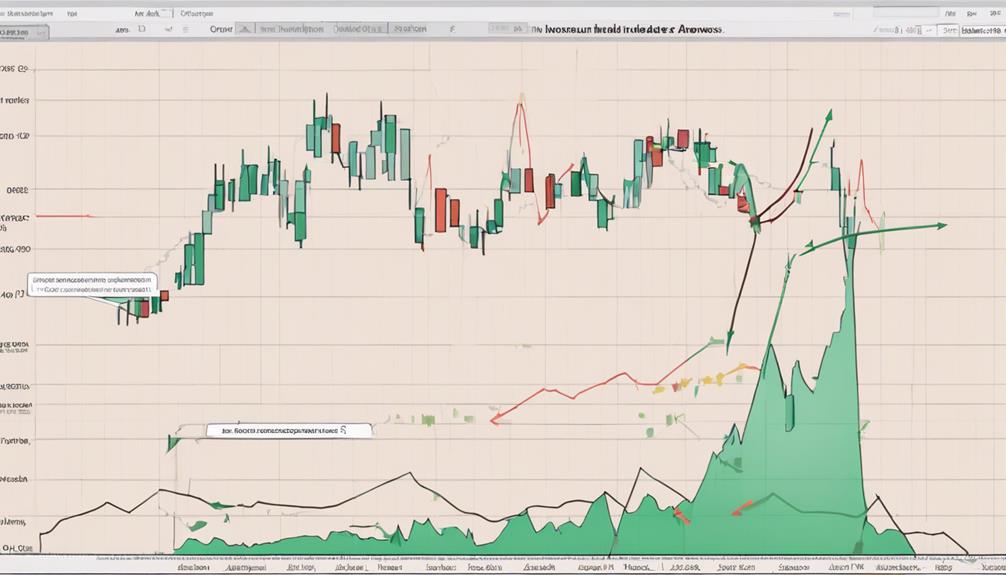In the realm of technical analysis, the Average Directional Index (ADX) stands as a pivotal instrument for traders seeking to gauge market trends and potential opportunities. As a cornerstone developed by Welles Wilder, ADX's significance in deciphering trend strength cannot be understated.
Through meticulous calculation and strategic interpretation, ADX empowers traders with the ability to navigate the complexities of fluctuating markets. Exploring the depths of ADX essentials unveils a world where informed decision-making and strategic positioning converge, offering a glimpse into the profound impact this indicator can have on trading outcomes.
Understanding Average Directional Index Calculation
In Average Directional Index (ADX) calculation, the exponential moving average of price ranges and directional movement values is utilized to determine the trend strength in a market. The ADX formula incorporates technical indicators that focus on price movement potential.
By smoothing the directional movement values over a specified period, typically 14 periods, the ADX provides traders with a numerical representation of trend strength. This index, ranging from 0 to 100, offers insights into the underlying strength of trends.
Values below 20 suggest weak trends, indicating potential consolidation or lack of clear direction, while values above 40 signal strong trends, potentially offering trading opportunities for traders seeking momentum.
Understanding the relationship between the Plus Directional Indicator (+DI), Minus Directional Indicator (-DI), and ADX values equips traders with the necessary tools to assess market trends effectively. By analyzing these indicators, traders can make informed decisions based on trend analysis, enhancing their overall trading strategies.
Interpreting ADX Signals for Trading

Analyzing ADX signals is imperative for traders seeking to gauge market trends effectively and make well-informed trading decisions. The ADX indicator helps traders determine the strength of a trend in a trending market.
ADX values below 20 typically indicate a weak trend or a ranging market, while values between 20 and 40 suggest a developing trend. A range of 40 to 60 signals a strong trend, with values above 60 indicating an extremely strong trend.
The ADX indicator, derived from the relationship between Plus Directional Indicator (+DI) and Minus Directional Indicator (-DI) values, plays a crucial role in assessing trend strength and potential trend reversals. Traders can utilize ADX readings to identify trading signals, especially when the ADX line crosses above or below certain levels, providing insights for making informed trading decisions based on trend analysis.
Understanding and interpreting ADX signals can significantly enhance a trader's ability to navigate various market conditions and optimize their trading strategies effectively.
Utilizing ADX in Technical Analysis

Utilizing the Average Directional Index (ADX) in technical analysis provides traders with a reliable tool for measuring trend strength across various market conditions. Developed by J. Welles Wilder, ADX is a versatile technical indicator that quantifies the strength of market trends, regardless of their direction. With values ranging from 0 to 100, ADX helps traders identify trending markets and evaluate the intensity of trends to make well-informed trading decisions.
Incorporating ADX in technical analysis alongside other indicators like moving averages enhances traders' ability to confirm price breakouts and analyze price movements effectively. By observing the crossing of ADX levels, traders can receive signals indicating potential trend changes. ADX values below 20 suggest weak trends, while values above 40 signify robust trends in the market. This feature equips traders with valuable insights into trend direction and assists in timely decision-making based on the prevailing market conditions.
Leveraging ADX for Trend Identification

Leveraging the Average Directional Index (ADX) for trend identification provides traders with a robust tool for evaluating and quantifying trend strength in various market conditions. By analyzing ADX readings, traders can make informed decisions on whether a market is trending or ranging.
Readings below 25 typically indicate a sideways or ranging market, while values above 25 suggest a developing trend. ADX can help determine the strength of a trend, offering insights into potential trend reversals and the overall momentum in the market. When paired with moving averages and other technical indicators, ADX becomes even more powerful in confirming price movements and identifying areas of support and resistance.
Rising ADX values signify increasing trend strength and volatility, aiding traders in navigating price fluctuations and spotting potential trading opportunities. Understanding how to utilize ADX effectively can significantly enhance a trader's ability to interpret market trends and make well-informed trading decisions.
Maximizing ADX Advantages and Overcoming Limitations

To optimize the benefits of the Average Directional Index (ADX) and address its inherent limitations, traders must strategically integrate ADX with complementary indicators and perform thorough analysis for enhanced trend assessment accuracy.
While ADX excels in identifying trend strength, it lacks directional bias, focusing instead on the intensity of trends. By combining ADX with other indicators, traders can minimize false signals and improve trend confirmation, enhancing the overall effectiveness of their analysis.
It is essential to note that ADX may lag behind price movements, necessitating caution and the use of complementary analysis to validate signals effectively. Incorporating ADX into trading strategies can significantly improve decision-making processes by providing a more comprehensive view of the market trends.
Understanding the limitations of ADX underscores the importance of thorough analysis and signal validation to ensure accurate trend assessment and successful trading outcomes.
Can You Explain the Essentials of the Average Directional Index in More Detail?
If you’re searching for a comprehensive guide on how to utilize the navigating directional index tutorial, you’ve come to the right place. The average directional index (ADX) measures the strength of a trend and can help traders identify potential trading opportunities. Understanding this essential tool can enhance your trading strategy.
Can you explain the Average Directional Index Essentials for beginners?
The average directional index explanation is essential for beginners to understand. It is a popular technical analysis indicator used in trading to measure the strength of a trend. By utilizing this tool, traders can identify whether a particular market is trending or consolidating, aiding them in making informed investment decisions.
How Can I Use the ADX Indicator to Improve My Trading Strategy?
When using the ADX indicator to enhance your trading strategy, it’s important to focus on the essential tips for ADX indicator to make the most of its capabilities. Utilize the ADX to identify the strength of a trend, use it in conjunction with other indicators, and set clear entry and exit points for your trades.
Frequently Asked Questions
What Are the Best Settings for the Average Directional Index?
The best settings for the Average Directional Index (ADX) depend on market dynamics, trader preferences, and time frame. Optimal ADX parameters are often customized to align with individual trading strategies, volatility conditions, and desired trend analysis accuracy.
How Reliable Is ADX Indicator?
The ADX indicator is highly reliable in assessing trend strength impartially, aiding traders in gauging market momentum accurately. With values from 0 to 100, it offers a quantitative measure, helping traders make well-informed decisions.
How Do You Interpret the ADX Indicator?
To interpret the ADX indicator, analyze values below 20 for weak trends, 20-40 for developing trends, 40-60 for strong trends, and above 60 for extremely strong trends. Crossovers and level changes offer insights for potential trend shifts and informed trading decisions.
Which Indicator Works Best With Adx?
When used in conjunction with the Average Directional Index (ADX), the Moving Average Convergence Divergence (MACD) indicator stands out for trend confirmation and signal validation, providing traders with a comprehensive approach to analyzing market trends and making informed decisions.
Conclusion
In conclusion, the Average Directional Index (ADX) is a powerful tool for traders to assess market trends and trend strength. By accurately interpreting ADX signals and incorporating it into technical analysis, traders can make informed decisions for entry and exit points in the financial markets.
While some may argue that ADX has limitations in certain market conditions, its advantages in trend identification and volatility assessment make it a valuable asset in a trader's toolkit.
